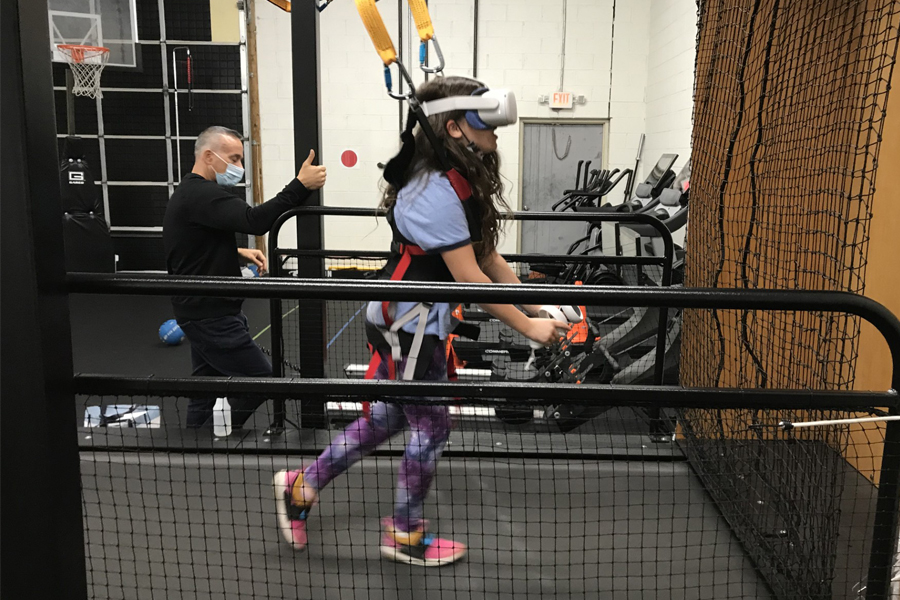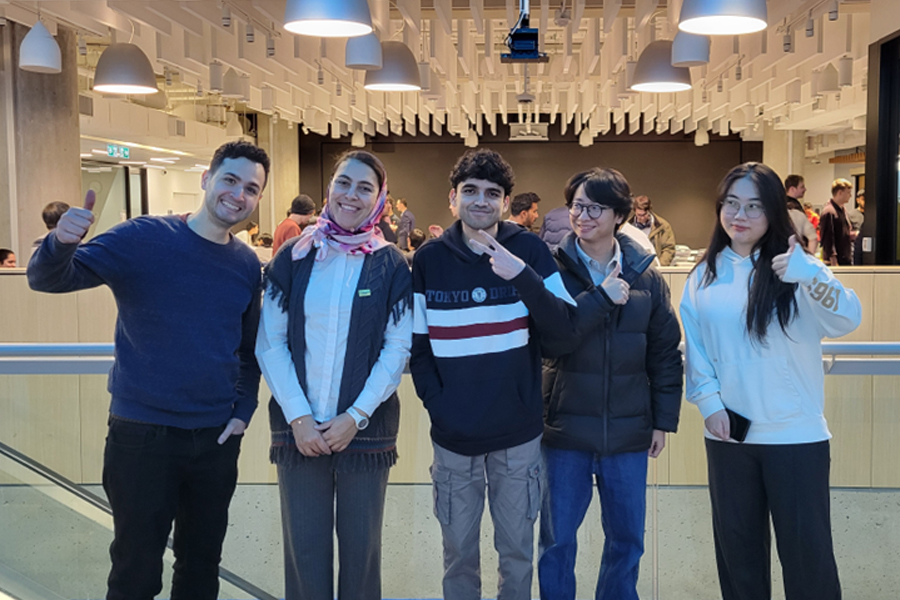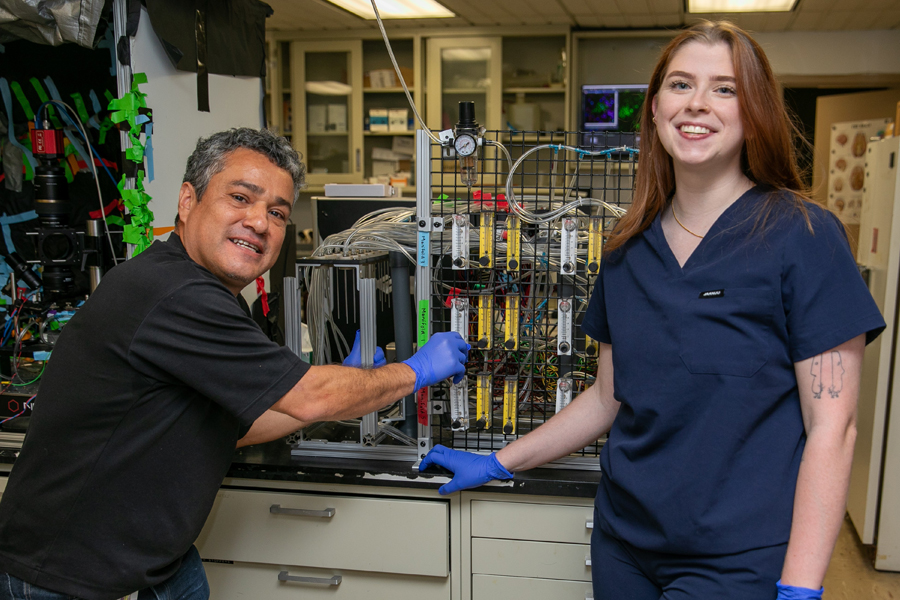The Role of Mathematica in the Classroom
New York Tech President Henry C. “Hank” Foley, Ph.D., is the author of Introduction to Chemical Engineering Analysis Using Mathematica: for Chemists, Biotechnologists and Materials Scientists, which is in its second edition.

In addition to spending more than 30 years advancing the study of nanotechnology, he holds 16 patents, has written more than 150 articles, and has mentored nearly 50 graduate and undergraduate thesis students, as well as postdoctoral fellows.
He discusses how Mathematica software can help students better integrate math into complex modeling, as well as opportunities for those outside traditional STEM majors and the future educational impact of artificial intelligence (AI).
Courses and curricula that cover physical sciences, physics, chemistry, and engineering require a working knowledge of mathematics to solve problems. How does Mathematica facilitate the integration of math in these and related STEM disciplines to improve learning?
Applying mathematics is ubiquitous in engineering and the sciences. When you teach these courses, you also impart a lot of math along the way, right down to the individual steps to solve problems, write different equations, and look at the behavior of solutions. With an advanced computing solution like Mathematica, that makes the math part so much easier. At the same time, however, that also means that the emphasis in STEM courses that use Mathematica needs to change. For example, in physical chemistry, you can now spend more time taking a closer look at the initial stages of analysis, grasping what the physical situation is, applying conservation principles, and other variables. Then the question becomes how to go from simple models to more complex ones that become more refined over time. A tool like Mathematica makes it much easier to do these more sophisticated things efficiently and effectively because you’re not spending so much time on the actual math equations involved to accomplish this. In short, it takes a lot of grunt work out of the development of mathematical modeling.
At what age or educational level should students start using Mathematica in their math education?
Somebody who is very cynical might say that it shouldn’t be used at all, that human beings need to learn all these steps in great detail to be educated mathematically and to become effective engineers and scientists. On the other hand, someone might say that because it is so easy to use tools like Mathematica, we don’t have to teach as much math as before. Neither is correct.
The reality is, it’s somewhere in between. Yes, we can ensure that students use Mathematica more. At the same time, you can’t take full advantage of Mathematica if you don’t know actual math. That’s where balance needs to be found, and that may be different depending on the grade level, and that includes both undergraduate and graduate learning.
Can tools like Mathematica help students who struggle with math?
In many ways, yes. Mathematica’s built-in AI companion, Notebook Assistant, features an LLM (Large Language Model) interface where questions can be posed and suggestions provided. In that sense, it could help overcome “math-phobia” for some students. We don’t want them to rely on AI to do all their work. But if AI gets them “over the hump” and empowers them with confidence, then that’s a great way to engage more people with math as a language for problem-solving.
What non-STEM disciplines would benefit from Mathematica being integrated into their coursework?
Business and social sciences do a lot with statistical inference and analysis. Mathematica offers great ways to help students in this regard. When you tie that to AI, suddenly people who may not even be confident in their ability to do statistics can start to do it well.
Mathematica is part of a larger family of Wolfram technologies, another of which—Wolfram Alpha—consists of highly curated databases that include literature, art, geography, and much more. So many majors and academic disciplines beyond the STEM fields can benefit from these new technology tools. Moreover, it’s curated information, so it’s not like using Google or another online source that has questionable accuracy. With Wolfram Alpha, you can have a high degree of confidence that the data are correct.
Q: How will Mathematica and AI impact teaching and learning in the next decade?
AI is everywhere today. It will continue to evolve, and that goes back to finding that balance between where the human and the AI computational system can best work together. One intriguing vision of AI is how it can offer customization of education at scale. For example, an LLM can be trained to teach students semester by semester as well as help assess how they like to learn. For example, if they are visual or audio learners. All of this will be incredibly helpful to methods of teaching and learning for years to come.
Members of the New York Tech community can download Mathematica, as well as several other licensed software products.
For more information, check out President Foley’s community presentation, “Mathematica, Wolfram Alphta, and ChatGPT.”
More News

Study: VR Helps Children With Autism Participate in Exercise and Sports
A new study by researchers from the School of Health Professions and College of Osteopathic Medicine demonstrates how virtual reality (VR) can help children with autism spectrum disorder participate in exercise.

Boxers Fight Back Against Parkinson’s Disease
A holiday “boxathon” hosted by NYITCOM’s Parkinson’s Center raised awareness for the disease and the importance of exercise in treatment, while bringing members of the Rock Steady Boxing community together at a time when patients may experience loneliness and isolation.

“Envisioning” More Inclusive Eyewear
As part of a collaborative initiative between New York Tech and the global eyewear company Marcolin, students from the School of Architecture and Design and NYITCOM teamed up to develop potential eyewear solutions for neurodivergent populations.

Vancouver Cybersecurity Students Hack Their Way to Third Place at CyberSci 2025 CTF Competition
New York Tech-Vancouver students achieved a significant milestone at CyberSci 2025, earning third place in the Vancouver region and 25th overall out of 86 teams across Canada.

What to Know About This Year’s Flu
As health officials brace for another active flu season, NYITCOM-Arkansas infectious disease physician Carl Abraham, M.D., shares what to expect and how to stay well.

Driven by ‘Why’
Third-year medical student Kassandra Sturm leads the charge on a new study helping to uncover the neurological source affecting the sense of smell in autism spectrum disorder.